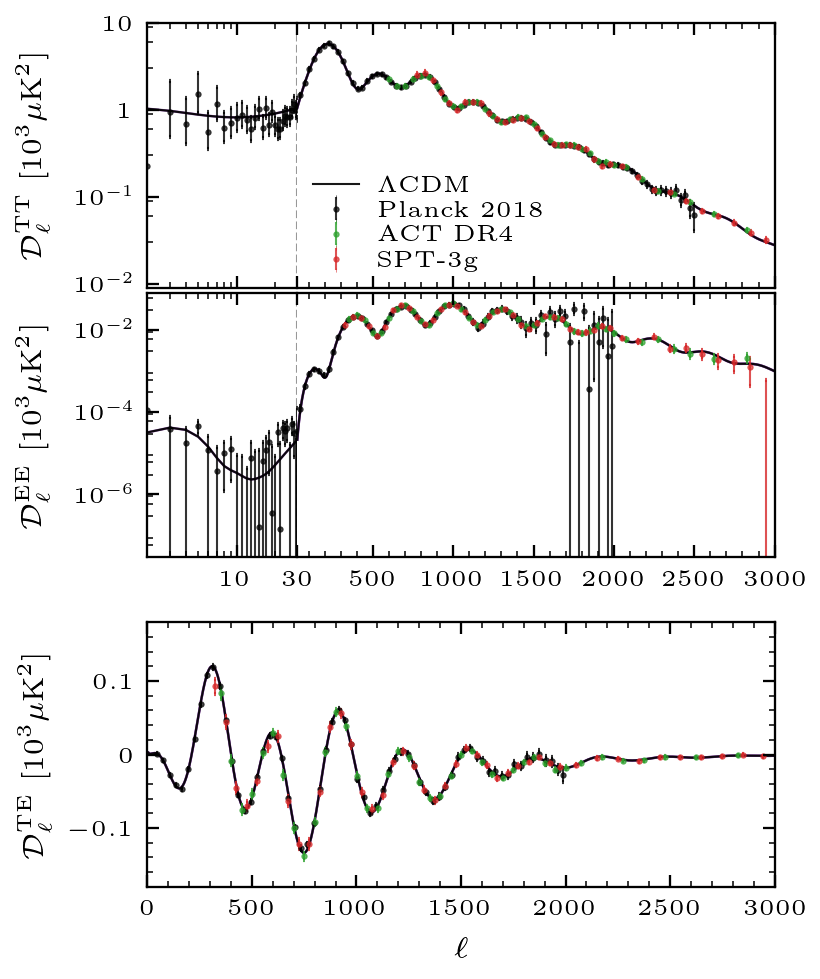Photon Optical Depth
Several hundred million years after the Big Bang, large structures composed of hydrogen and dark matter cooled and collapsed under their own gravity, leading to the formation of the first stars. The ultraviolet photons emitted by these stars had enough energy to ionize the neutral cosmic gas spread throughout space, releasing free electrons. This period, known as the epoch of reionization, is caractherized by a non-negligible probability of Thompson scattering the newly released electron with the CMB photons streaming through the universe at this time. The amount of scattering depends on the optical depth at reionization, \(\tau\), which represents the opacity of free electrons to CMB radiation. We quantify this effect by considering a photon traveling in the direction \( \hat{\pmb{n}}\) with temperature \( T(\hat{\pmb{n}})=\bar{T}[1+\Theta(\hat{\pmb{n}})]\), where \(\bar{T}\) refers to the mean temperature of the CMB and \(\Theta(\hat{n})\) represents the temperature anisotropy in that direction. The probability of the photon passing through space unscattered is \(e^{-\tau}\), while the probability of the photon scattering is \( 1 - e^{-\tau} \). From this, the temperature observed follows:
\( T(\hat{\pmb{n}})=\bar{T}[1+\Theta(\hat{\pmb{n}})e^{-\tau}] \)
As a result, anisotropies in the temperature map are uniformly suppressed by a factor of \(e^{-\tau}\), corresponding to a reduction in the amplitude of the power spectra by a factor of \(e^{-2\tau}\).
Increasing \(\tau\) also enhances the power of the EE polarization spectrum at low multipoles. This occurs because scattering events during reionization generate polarization transverse to the direction of photon propagation. This polarization effect is confined to angular scales smaller than the size of the horizon at the time of reionization. An enhancement of the optical depth increases the amount of scattering events during reionization, and thus more polarized radiation is produced, leading to a noticeable polarization signal (a bump) at large angular scales.
